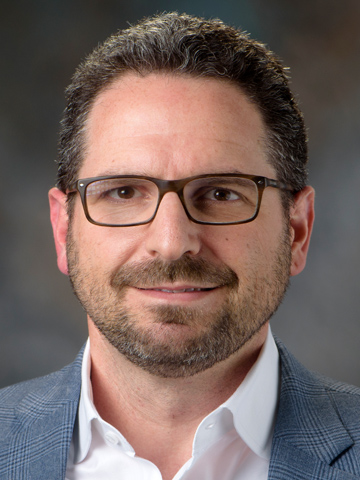New Data Support Preoperative Chemoradiation Regimen for Borderline Resectable Pancreatic Cancer

Surgery remains the only potential cure for pancreatic cancer.
For patients with borderline resectable disease, downstaging and downsizing the tumor becomes particularly important. Neoadjuvant treatment regimens of chemotherapy or radiation are typically administered with the hope that surgery can take place and microscopic distant metastases will be eliminated. Currently, there is no guideline as to what neoadjuvant regimen may work best for these patients.
New data on the Alliance A021501 study presented at the 2021 ASCO GI Cancers Symposium potentially helped answer that question. But they also raised a few more.
According to the study results, a reference regimen for these patients is neoadjuvant therapy with modified FOLFIRINOX (mFOLFIRINOX). This regimen improved survival for patients with borderline resectable disease relative to historical data, explains surgical oncologist Dr. Matthew Katz. Katz is the lead investigator of the Alliance A021501 study, part of the Alliance for Clinical Trials in Oncology. Patients in this study were randomized to receive either eight cycles of modified FOLFIRINOX or seven cycles of modified FOLFIRINOX then stereotactic body radiation therapy (SBRT) prior to anticipated pancreatectomy. Patients who received chemotherapy alone had an overall 18-month survival rate of 66.4%. Patients who received chemotherapy then radiation had an 18-month survival rate of 47.3%.
Radiotherapy May Still Have a Role
Although chemotherapy with mFOLFIRINOX represents a reference preoperative regimen for patients with borderline resectable pancreatic cancer, it does not mean that radiation may not potentially have a role in the preoperative setting, says Katz, chief of the Pancreatic Surgery Service at The University of Texas MD Anderson Cancer Center, Houston.
“Radiation is not dead in the water,” he explains. “The trial was not designed to directly compare its treatment arms. But its results are being seen through the lens of preexisting bias and its results contorted to fit that bias. Some people feel very strongly that preoperative radiation is beneficial, and argue that this trial’s results are an artefact of poor trial design. On the other hand, those who didn’t believe in the value of radiation before now view this study as further support for that belief.”
Neither viewpoint is actually correct. Pancreatic cancer is notoriously heterogeneous, meaning that one patient’s tumor is not like another patient’s tumor even though they may look the same. “The problem is that we are trying to demonstrate a role for radiation in a population of patients selected only on the basis of shared anatomy of the primary tumor. Radiation probably helps certain patients, but we don’t yet have a clear picture of who those patients are. It doesn’t seem to help just one anatomic stage of patients,” Katz adds. “We need clinical markers of who will benefit from radiation, and this study just wasn’t designed to do that. We will need to identify this group of patients before we can realistically hope to see a big effect on survival.”
ASCO guidelines recommend that preoperative therapy be given to patients with localized pancreatic cancer who have tumors that have a significant radiographic interface with the major mesenteric blood vessels. It’s these patients who are at “high risk for a margin-positive operation and short survival,” when pancreatectomy is performed without prior treatment, says Katz. “But the issue is: though we often give both chemotherapy and radiation to these borderline patients, the optimal regimen in this setting is controversial,” he continues.
About the Study
To better reflect differences in practice patterns, Alliance A021501 was designed with one neoadjuvant regimen that included radiation therapy and one that did not, Katz explains.
Patients without disease progression following preoperative treatment underwent a pancreatectomy followed by four cycles of postoperative FOLFOX.
Of the 126 patients with borderline resectable pancreatic adenocarcinoma who participated in the study, 110 were randomly assigned to either eight cycles of mFOLFIRINOX or seven cycles of mFOLFIRINOX followed by five days of hypofractionated radiation using either SBRT or image-guided radiation treatment. An additional 16 patients were assigned to mFOLFIRINOX alone after the radiation-treatment arm was closed at the first interim analysis due to too few patients moving on to pancreatectomy.
Results included:
- The mFOLFIRINOX arm (A) yielded an 18-month overall survival rate of 66.4%, a median overall survival duration of 29.8 months, and a median event-free survival duration of 15 months. Among the 49% of patients who proceeded to pancreatectomy following neoadjuvant therapy, the clean margin (no macroscopic or microscopic tumor) resection rate was 88%, the pathologic complete response rate was 0%, and the 18-month overall survival rate reached 93.1%.
- For comparison, the mFOLFIRINOX-RT arm (B) yielded an 18-month overall survival rate of 47.3%, a median overall survival duration of 17.1 months, and a median event-free survival duration of 10.2 months. Among the 35% of patients who proceeded to pancreatectomy following neoadjuvant therapy, the clean margin (no macroscopic or microscopic tumor) resection rate was 74%, the pathologic complete response rate was 11%, and the 18-month overall rate reached 78.9%.
The Take-Home Message
Katz emphasizes there is “absolutely no question Arm B was unsuccessful and patients on chemotherapy (Arm A) did really well,” he adds. But it’s important to think about radiation in the context of other studies.
“The way I think about this study is: we wanted to find one or more preoperative backbone regimens that we could then add novel stuff to—not to compare the regimens directly,” he says. “Is chemo a good backbone? Yes. Is chemotherapy then radiation a good backbone? The answer is that we still don’t know. When you think about a big group of patients selected only on the basis of the radiographic appearance of their tumor, it doesn’t seem like it. But I do believe there is a population of patients with localized pancreatic cancer who will benefit from radiation prior to surgery. Not everyone will benefit, but not everyone benefits from surgery either.”
Katz says it’s imperative to run more trials to help determine markers that can be used to better select patients who may benefit from both radiation and surgery. “We need to figure out which patients benefit most from local control, and we know from studies that radiation does improve local control,” he says. Katz and colleagues are currently proposing a study through Alliance to better determine what patients may benefit from local therapy.





